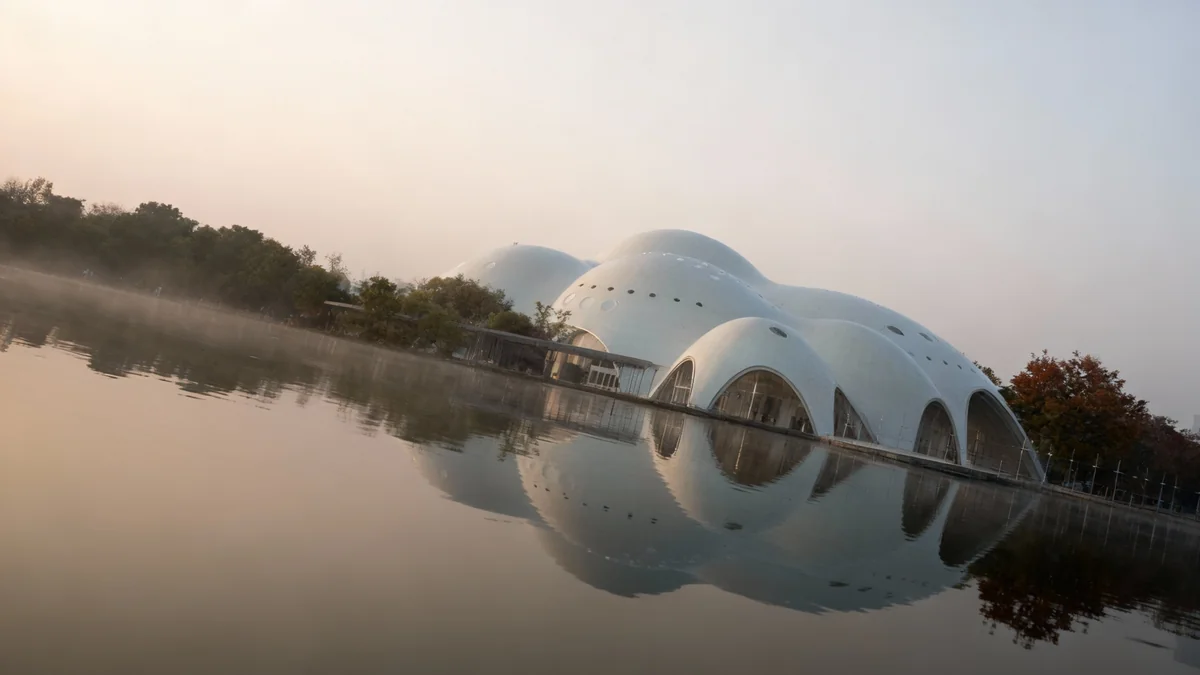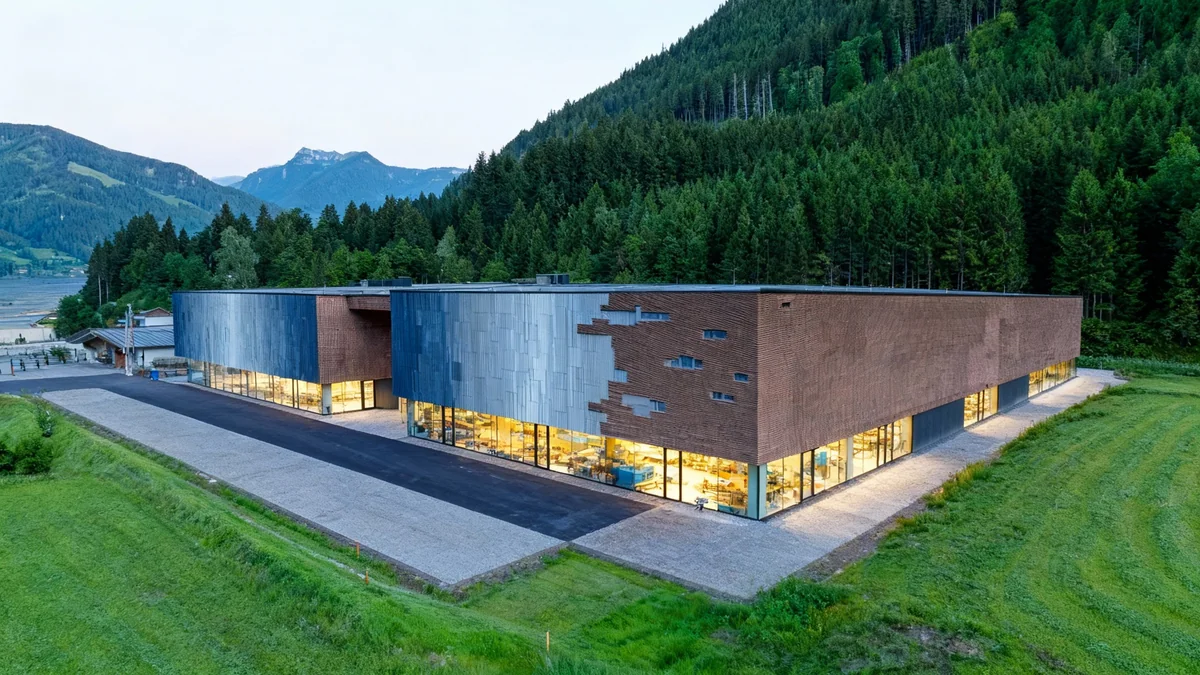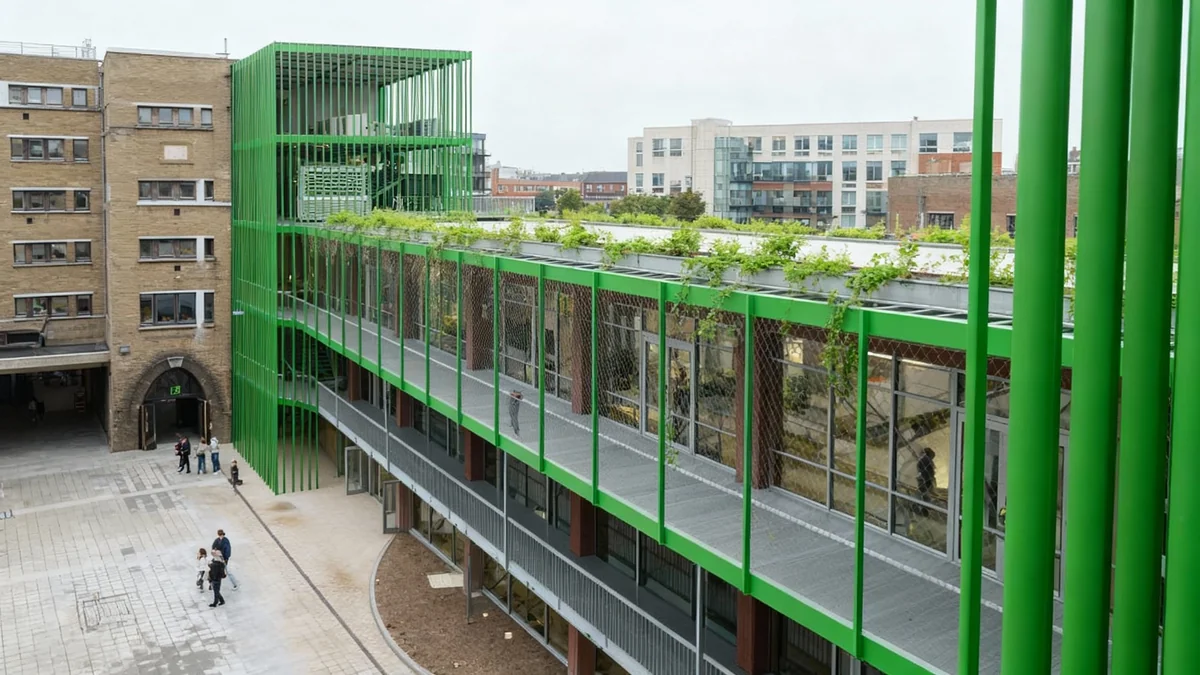Construction has officially commenced in Hanoi on a major new cultural landmark, the Isola Della Musica opera house. The structure, designed by the renowned Renzo Piano Building Workshop in collaboration with PTW Architects, will be situated on a newly created island between West Lake and Đam Tri Lake.
Envisioned as a cultural hub for the Vietnamese capital, the project features a distinctive design inspired by the iridescent qualities of mother-of-pearl. The complex will house two main performance spaces, aiming to attract both local and international artists and audiences.
Key Takeaways
- Construction has started on the Isola Della Musica opera house in Hanoi, Vietnam.
- The project is a collaboration between Renzo Piano Building Workshop and PTW Architects.
- It will feature a 1,800-seat opera hall and a 1,000-seat convention hall.
- The building's exterior will be covered in pearlescent ceramic tiles to mimic a pearl.
- The structure sits on a purpose-built island, creating a unique waterfront cultural venue.
A New 'Island of Music' for Hanoi
The ambitious project, commissioned by Vietnamese developer Sun Group, is named Isola Della Musica, which translates from Italian to "Island of Music." The name is literal, as the entire complex will occupy a new, man-made square island, positioning it as a distinct focal point in the city's landscape.
The venue is designed to serve multiple functions. Its primary feature is a grand opera hall with a capacity of 1,800 seats. Alongside this, a separate convention hall will accommodate up to 1,000 people, making the facility versatile enough for a wide range of cultural and corporate events.
By placing the structure on the water, the architects aim to create a serene and immersive experience, separating the world of performance from the bustle of the city.
A Global Architectural Vision
Renzo Piano Building Workshop, founded by Pritzker Prize-winning architect Renzo Piano, is known for iconic cultural buildings around the world, including The Shard in London and the Centre Pompidou in Paris. Their involvement signals the international significance of the Hanoi project.
An Architectural Homage to Nature
The most striking element of the Isola Della Musica is its unique, shell-like exterior. The design is directly informed by the color and luminosity of mother-of-pearl, a material with deep cultural resonance in Vietnam.
To achieve this effect, the building's curved concrete roof will be meticulously clad with thousands of pearlescent ceramic tiles. According to the design team, these tiles will vary in size to follow the building's complex curves, creating a dynamic, textured surface.
"The surface's appearance will change in different weather and light conditions over the course of the day with a mother-of-pearl shining effect," the Renzo Piano Building Workshop stated.
Renderings show a bulbous roof form that appears to float above tall glass walls. As the roof sweeps down towards the ground, it forms elegant arched openings, creating a seamless connection between the interior and the surrounding plaza.
Innovative Structural Engineering
Beneath the shimmering facade lies a sophisticated structural system. The building's primary structure is a thin, ribbed concrete shell engineered with what are known as catenary curves. This mathematical shape allows the massive roof to work almost entirely in compression, efficiently distributing its weight.
This design choice is not just for aesthetics; it is highly functional. The firm explained the engineering behind the concept.
The Power of the Catenary Arch
A catenary is the curve that an idealized hanging chain or cable assumes under its own weight when supported only at its ends. When inverted, it creates a catenary arch, an incredibly strong structure that works purely in compression, eliminating tensile stress. This principle has been used in architecture for centuries.
"A thin ribbed concrete structure is the primary structural component, which, mathematically, is a 3D catenary form working completely in compression," the workshop noted. This allows the structure to be supported by a few internal points and at its perimeter, resting on the foundation of the island itself.
This innovative approach also provides flexibility. The spaces between the concrete ribs can feature openings, such as the planned circular skylights, without compromising the building's structural performance. The architects emphasized that the final shape is a direct result of the building's internal functions and spatial requirements.
A Future Cultural Icon
The Isola Della Musica is set to become a cornerstone of Hanoi's cultural scene. Its strategic location, world-class design, and significant capacity position it to be a leading venue for the arts in Southeast Asia.
As construction moves forward, the project represents a significant investment in the city's cultural infrastructure. It aims to blend cutting-edge architectural innovation with a design that is deeply rooted in the natural world, promising a landmark that is both visually stunning and functionally exceptional.




